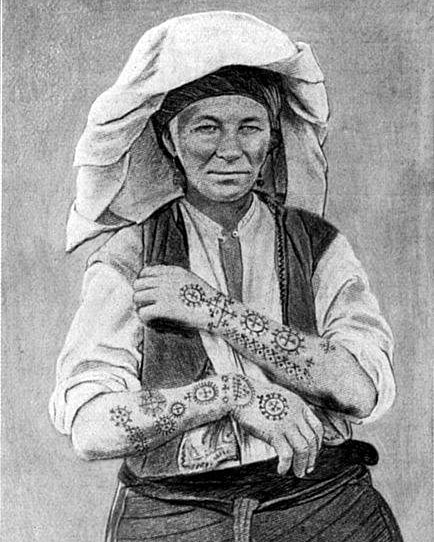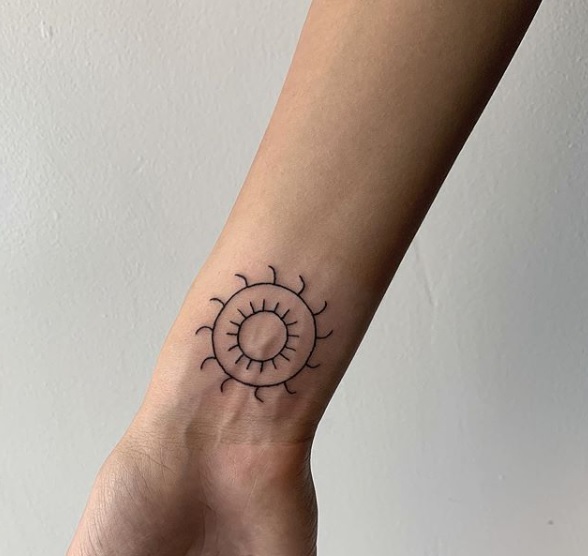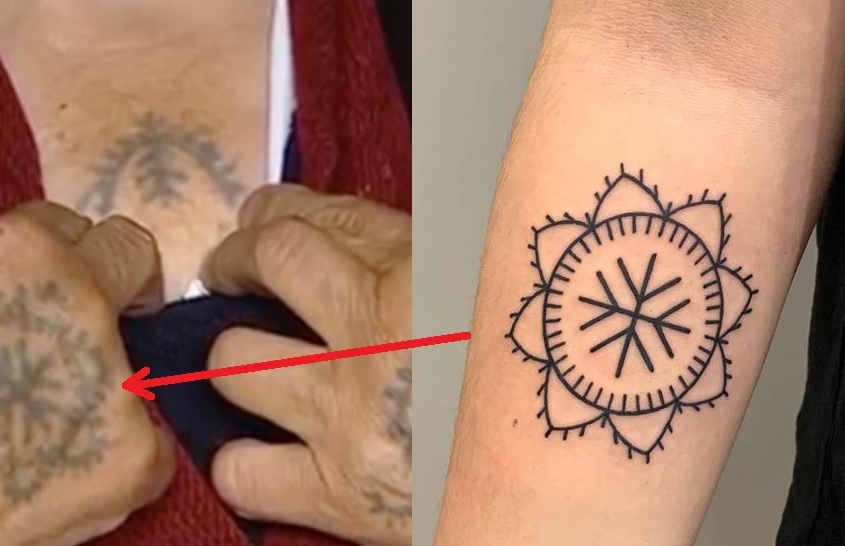September the 4th, 2023 – Traditions abound across Croatia and vary from region to region, they come in the form of everything from food to wine to folklore costumes and superstitions. Did you know that traditional Croatian tattoos also have a very interesting history behind them?
Traditional Croatian tattoos have roots which go very deep, the practice itself is either referred to as sicanje (literally: to prick) or sometimes bocanje, and it is generally believed that the practice predates not only the arrival of the Slavs to the wider Balkan region, but also Christianity itself!
Sicanje (or bocanje, if you will), is widespread among ethnic Croatian women of the Roman Catholic faith in different regions, primarily in Dalmatia and also in parts of neighbouring Bosnia and Herzegovina. Sadly, like many past customs, the tradition of tattooing girls and women ceased after the end of WWII, with only older women (sometimes referred to as tetovirane bake, or tattooed grandmas) seen with such tattoos.
It is widely accepted that while the practice predates the Ottoman Empire, in the areas which the marauding Ottomans once invaded and occupied, these tattoos helped local Catholic girls and women avoid capture by the Turks. The Muslim invaders were allegedly put off by the women with these tattoos, and those who wore them on their skin believed Christian symbolism on display in such a manner would not only protect them, but would prove practical in warding off any forced attempts at conversion to Islam.
What do these traditional Croatian tattoos look like?

The most commonly tattooed parts of the body in sicanje/bocanje are the wrists, hands, fingers and forearms, as well as the chest and even the forehead in times gone by. In support of the theory of sicanje predating not only the arrival of the Slavs in the wider Balkan region but also Christianity is the fact that pagan symbols were often tattooed, as well as other typically non-Christian symbols.
That said, many typically Roman Catholic and even symbols with a national background of sorts to them could be found, such as circular symbols which are believed to represent the traditional kolo dances seen across Croatia. Of the religious symbols, crosses, are apparent. There are also fence-like wrist tattoos and depictions of pine trees. These tree-like symbols, as well as religious ones from either the Roman Catholic faith or indeed paganism often appeared intertwined, reflecting symbolism from back during Illyrian times, all the way to Catholic adaptations.
The cross (kriz), the pine tree (jelica), the fence (ograda), branches (grancica) and the bracelet designs (narukvica) are all common traditional Croatian tattoos, with young girls being tattooed in older times at ages as young as six or seven. Tattoos of stecci-like structures (stecci (singular: stecak) are a traditional form of monumental medieval tombstone that can be found across Bosnia and Herzegovina) were also common to an extent, with women and girls having these symbols tattooed on different parts of their bodies which sometimes alluded to which part of the country they hailed from.
In the modern day

Traditional Croatian tattoos were first written about way back in the 1st century BC, when Greek geographer Strabo first wrote about the practice of sicanje among the inhabitants of what is now modern-day Bosnia and Herzegovina and Croatia among the Illyrians. Those customs have strong roots, and while methods have changed (these tattoos are no longer created through the pricking of the skin which gave it the name sicanje), but placing these sacred symbols onto the body has stood the test of time for lovers of tattooing.
Tattoos have always been an important part way in which people can express themselves in a way that will remain on their skin even after they die. Tattoos have led the police to criminals, they’ve doomed relationships, they’ve made many a mother see red and they have been a source of fascination for centuries. In the modern day, tattoo artists are unfortunately among the only fine artists who can still make a good living from their talents. In modern Croatian society, it’s not uncommon to see representations of traditional Croatian tattoos mixed in with a more modern twist.
Examples of traditional Croatian tattoos from both past and present can be seen here.











